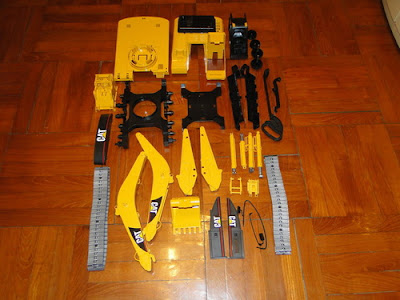After completing the conversion, I enjoyed playing with it all the time and shared with others as well. However, due to very rough machining or fabrication, some of the components did not perform what they normally do. I have made some improvements as follows:
1. The Antenna
The original antenna is a wire connected to the receiver box and a plastic tube is provided to support it. It was very difficult to store it when unused. I replaced it with a retractable antenna which can be conveniently pulled out and retracted.
2. The Fuse
The Vexplorer transmitter and receiver kit used to control the machine worked very well until some time ago I smell something coming from the receiver box. I didn’t know what happened and opened it. Two tiny parts were burnt out and therefore two channels were not functioning. I believe that it was caused by the surge current of stall motors. As there is no way to order the receiver box alone, I have to order the whole kit which is a waste of money.
To avoid the new receiver burnt out again, I installed a fuse in the power supply circuit which was next to the battery box for easy replacement. The size of the fuse is 1A as it should be well enough for 3 motors running at the same time.
3. The Head Lamps
Two LED lights are installed at the roof of the cab to stimulate the real machine.
4. The Cylinders
The cylinders converted from the original plastic components were not strong enough. To save the issue, I fabricated the cylinder body from aluminum tubes. The section housing the micro motor and gear box is a 16 x 14 mm; remaining cylinder is 14 x 8mm. The cylinder rod is 8mm x 6mm of which the screwed shaft is turning inside. A small flat bearing is put in the driving shaft to provide a smooth turning. Two grub screws, one in each side of the cylinder are used to stop the turning of the motor inside the cylinder.
It took me a few days of spare time for making one cylinder. If it runs smoothly, I will modify the remaining boom, stick and bucket cylinders.


























